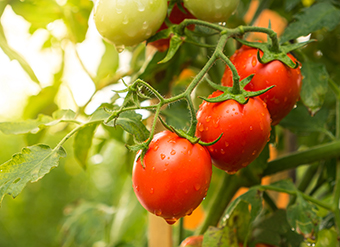Coming Together by Erik Runkle

The floriculture industry in the United States has changed dramatically over the last 25 years, and it will continue to change at an increasing pace.
In the early 1980s, the industry was transitioning out of cut flower production and into flats of bedding plants. In 1981, the average wholesale price received for a flat of bedding plants was $4.99. When adjusted for inflation, that’s equivalent to $12.40 in today’s dollars. Yet, the average wholesale price for a flat of bedding plants sold last year was just $8.40. Although bedding plants will remain the bread and butter of floriculture, traditional landscape plantings will continue to erode, and more consumers will purchase instant containerized gardens and indoor plants and flowers for their homes and offices.
So What’s Next?
To grow our industry and to remain profitable, growers will continue to improve their production efficiencies. Ornamental producers will work together even more, forming business alliances and cooperatives. They will work harder for brand-name recognition and find ways to improve the customer’s experience with their plant and flower purchases.
The most innovative and successful growers will produce new crops, including reintroductions from the past, new product segments and truly new varieties produced by breeders and molecular biologists. Service to merchandisers and consumers will become more important than ever.
Twenty-five years ago, the role of the university Extension educator was to provide unbiased, research-based information to growers. That has not changed, and it will not change over the next 25 years. Information delivery has, however, changed from on-site grower visits and local meetings to print and online media and international meetings. Information shared on the Web will continue to increase, reaching growers throughout the U.S. and the world, 24/7.
University-Industry Alliances Will Grow
In the future, Extension specialists in floriculture will work even closer with entomologists, plant pathologists, economists, post-harvest biologists, agricultural engineers and other specialists to solve industry problems, improve production efficiencies and reduce production inputs. Similar to the airlines, universities will form alliances where faculty work together with industry leaders to coordinate research activities and communicate information. An airline alliance is able to deliver passengers to a wider range of destinations. A university-industry alliance is able to deliver more comprehensive and integrated information to growers in a seamless manner.
In the past 25 years, the commercial production of floriculture crops has become much more efficient, primarily from increased mechanization. That will only continue in the next 25 years. We will also focus more on providing the optimum environment and culture for plants.
Growers who specialize in producing one or a handful of specific crops will minimize inputs of heat, light, water, fertilizer, pesticides and labor. Greenhouse growers in Western Europe realized this years ago: By growing monocultures, they can optimize their greenhouse structure, mechanization, environment and product flow. Growers in the United States who pool their crops with other growers’ crops and systematically distribute and service them for sales, have a real opportunity to gain efficiencies of scale.
The role of university Extension faculty will be to help facilitate and provide leadership for advances in greenhouse crop production. With industry partnerships, they will continue to create new information through research and disseminate that in an unbiased manner to the floriculture industry. With little or no state or federal operating funds, university faculty will rely more than ever on funding from granting agencies and especially leading floriculture companies–growers and allied trades–to create and deliver the new, readily applicable information. Knowledge will be more lucrative than ever.
I am upbeat about the floriculture industry. We produce flowers and plants that improve the quality of life in an ever-increasing, fast-paced world. We all need to do a better job communicating the importance and essentiality of plants and flowers to society. We also need to improve customer experiences with their floriculture purchases so they come back for more. Let us work together in the next 25 years to help our society realize the magic of flowers.










